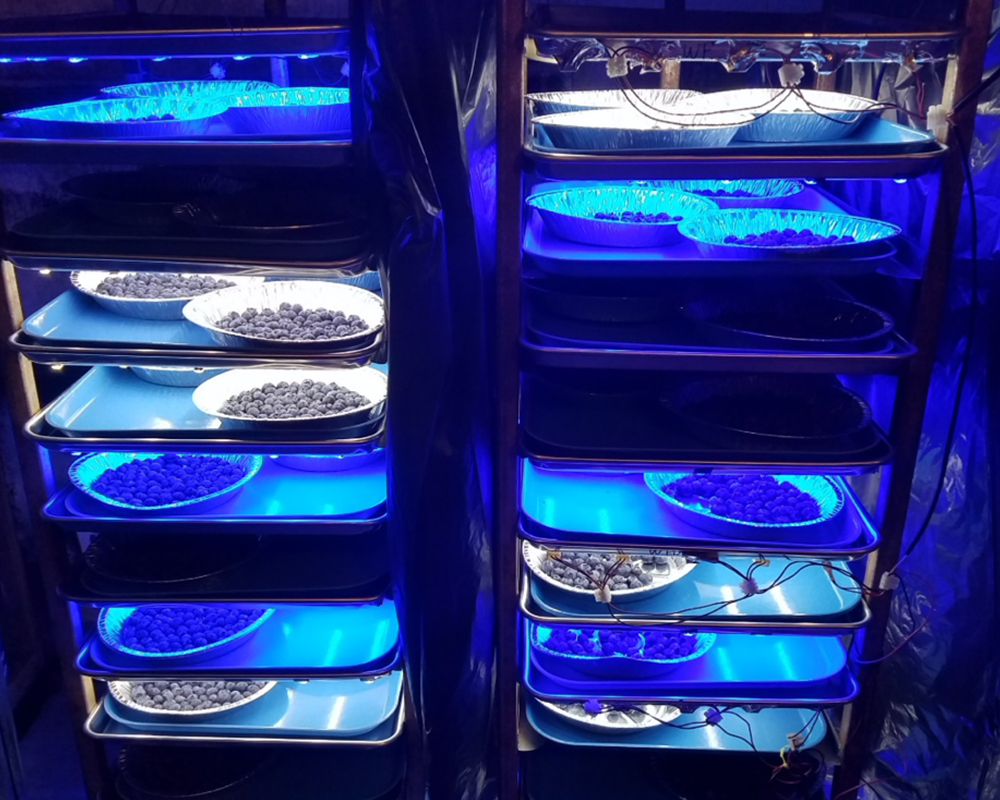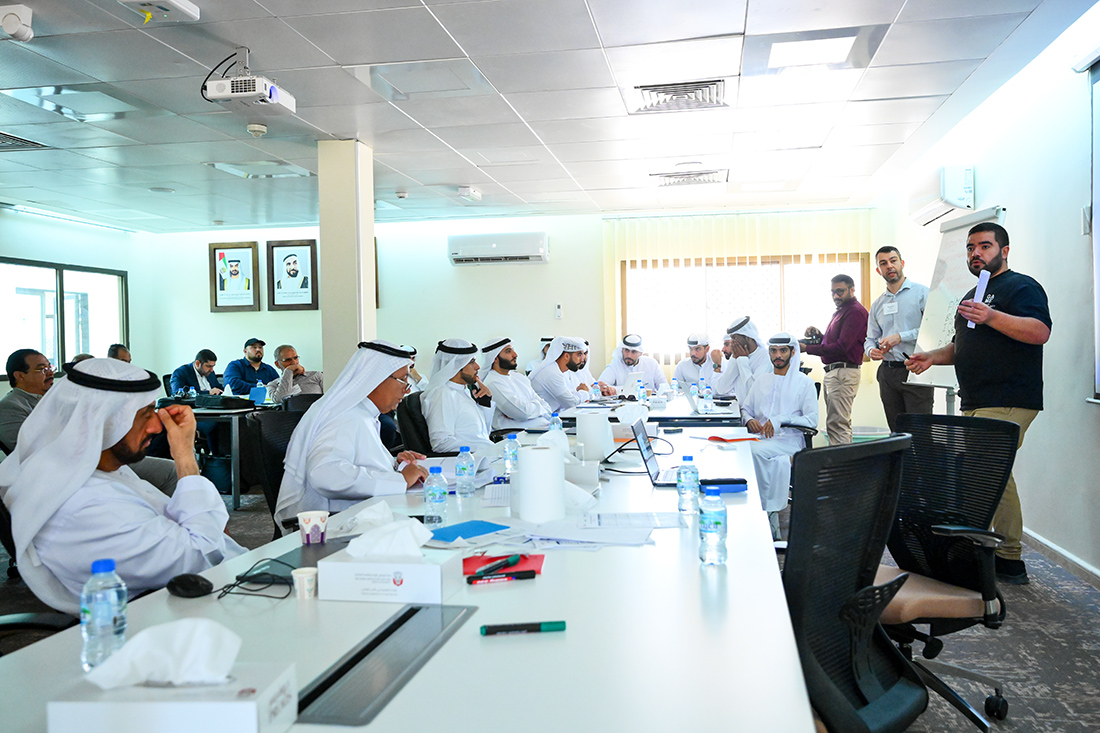The COVID-19 crisis has put supply chain issues at the forefront of food production and packaging concerns. Researchers at the University of Georgia investigated a potential solution for extending the shelf life of blueberries by exposing blueberries to blue light during storage.
Led by horticulture doctoral candidate Yi-Wen Wang, the study, recently published in the journal Horticulturae, suggested that blue light has no effect on fruit quality or disease development in ripe blueberries during their postharvest cold storage.
The multidisciplinary study was supervised by horticulture faculty member Savithri Nambeesan in collaboration with professors Marc van Iersel and Harald Scherm in UGA’s College of Agricultural and Environmental Sciences (CAES) and previous CAES research assistant Helaina Ludwig.
“Blueberries are a very important crop in Georgia. If we can extend the shelf life of blueberries, then we can help farmers and also consumers to get more fresh and great-tasting blueberries,” said Wang.
After harvest, the antioxidant-rich berry decreases in quality by shriveling, cracking and developing disease. Blue light specifically has been shown to increase anthocyanins, which are antioxidants, in strawberries and bayberries. The research looked specifically at the attributes of fruit softening, visual appeal and anthocyanin content.
An expert in LED lighting research in the Department of Horticulture, van Iersel collaborated on aspects of LED light setup and experimental planning. The study examined two varieties of blueberries, some hand-harvested and some machine-harvested, under blue light compared to control groups under white light and continuous darkness. Researchers measured blueberry fruit quality using texture, weight, color and other quality attributes.
“That’s what consumers care about — the first thing is the visual appeal … Consumers prefer firmer blueberries,” Wang said.
The researchers simultaneously tracked both the natural disease development of berries and a select group inoculated with spore suspension of common blueberry pathogens. Scherm’s lab in the CAES Department of Plant Pathology collaborated on aspects of the study related to postharvest disease development on blueberry fruit under the different light treatment regimes.
The UGA researchers are the first to test the effect of blue light on blueberry fruit quality. Previous studies exhibited success in using blue light to inhibit the growth of pathogens on citrus. Though the study did not find blue light application as an effective method for quality improvement or fighting pathogens in blueberries, the results did contribute to further blueberry research for Georgia producers and consumers.
“It is important to publish data that does not always show positive results, since it is data in itself. If another scientist has a similar idea and is looking for literature, they have information on what did not work. In the long run it will save resources and time and will allow for modifications of methods in this area, thus taking a step forward,” said Nambeesan, principal investigator on the project and assistant research scientist in the Department of Horticulture.
Nambeesan said her lab will continue to work on additional problems facing the Georgia blueberry industry, such as the quick-paced decline in fruit quality after harvest.
“There are still other research areas that we can focus on in the future, such as looking at preharvest manipulation of light quality in the field or increasing the intensity of blue light during postharvest storage,” Nambeesan said. “We are also interested in developing strategies that help with fruit harvesting, such as development of ripening aids and postharvest storage.”
The development of strategies — including changing lighting forms — to increase yield, maintain fruit firmness and decrease disease would contribute to the reliability of the fresh blueberry supply chain, especially prevalent following fresh produce supply issues related to COVID-19. The research was supported by a grant from the Southern Region Small Fruit Consortium.
For more information on the Department of Horticulture Department, visit hort.uga.edu. For further information on the Department of Plant Pathology, visit plantpath.caes.uga.edu. To learn more about CAES research, visit caes.uga.edu/research.




